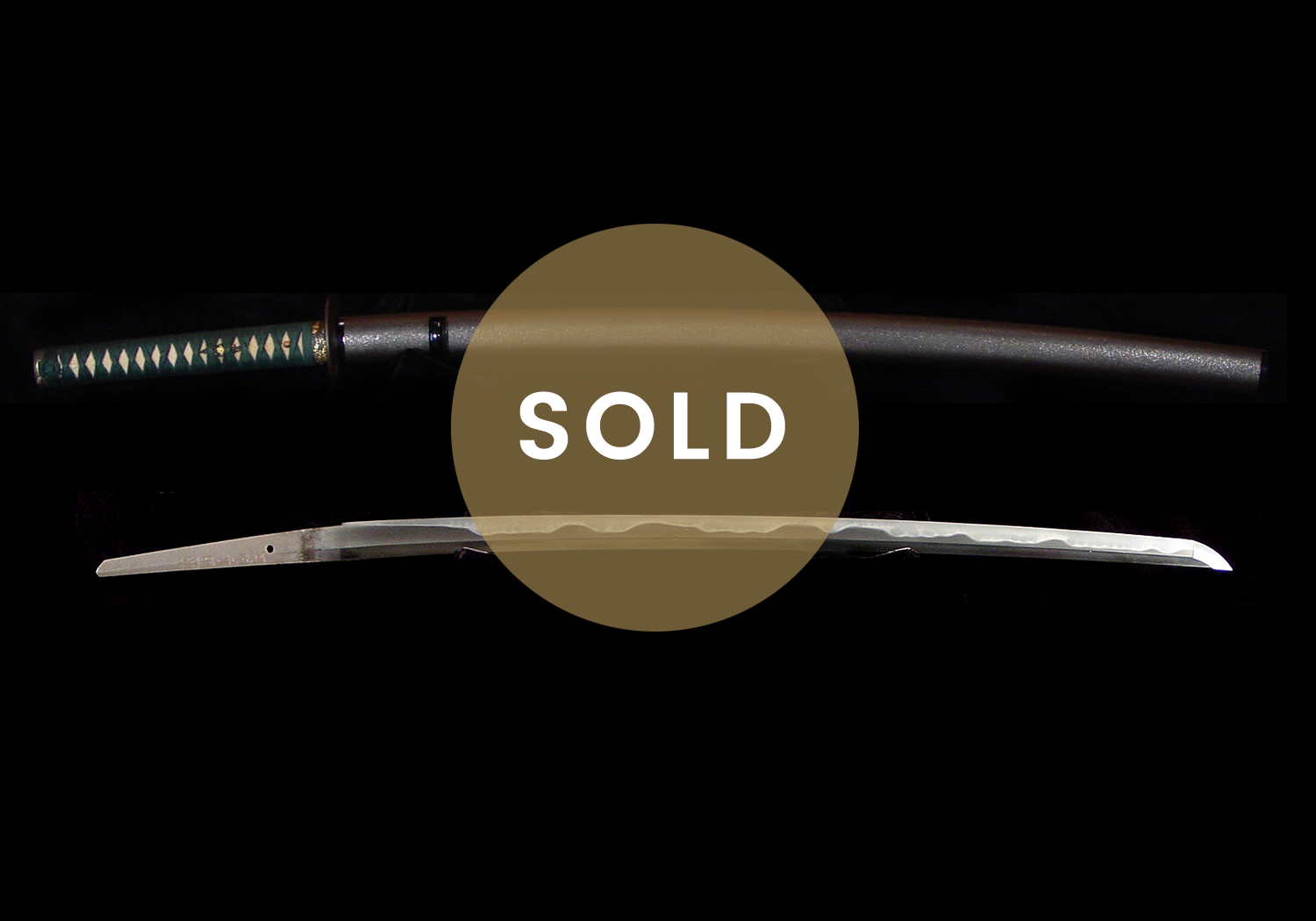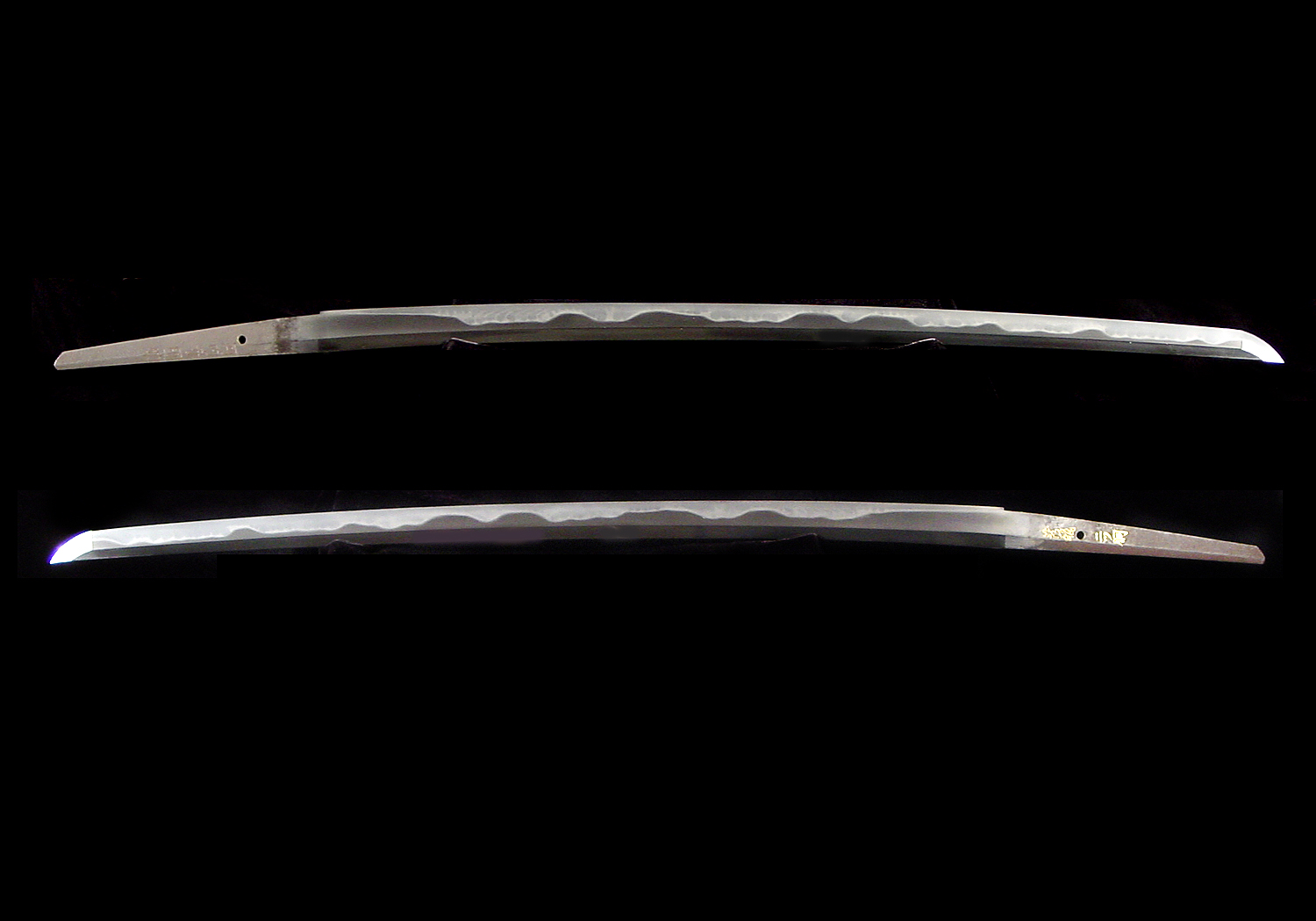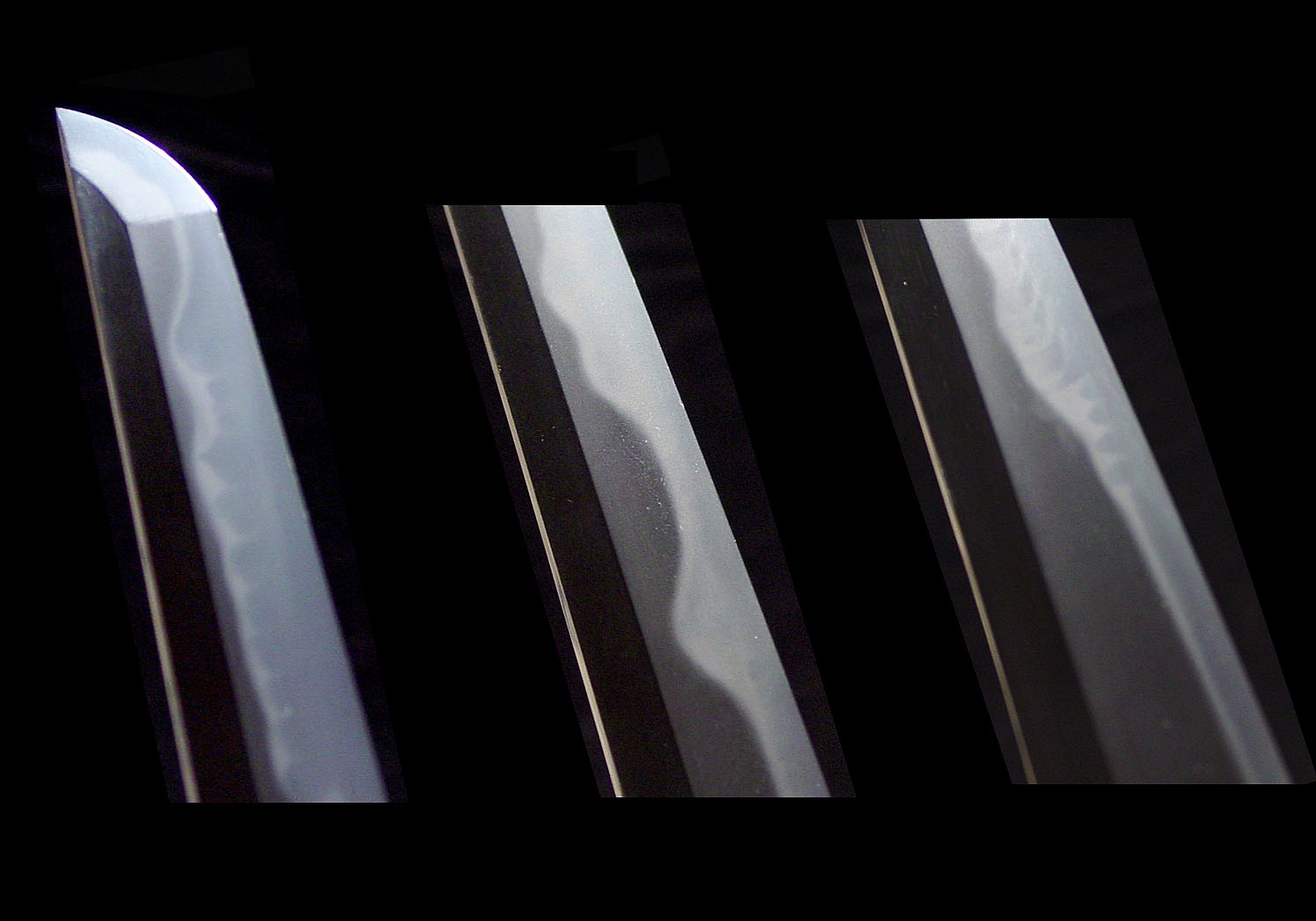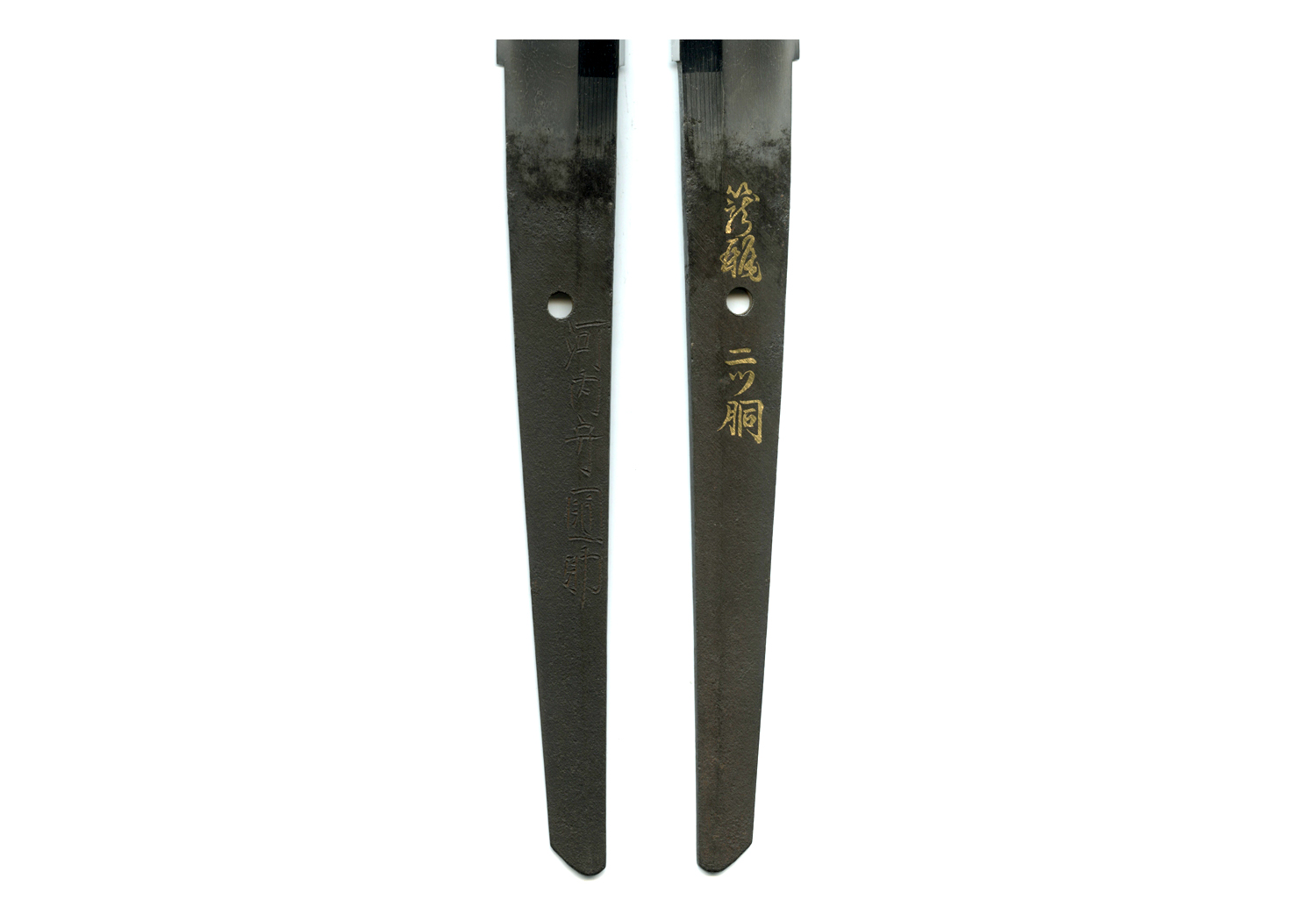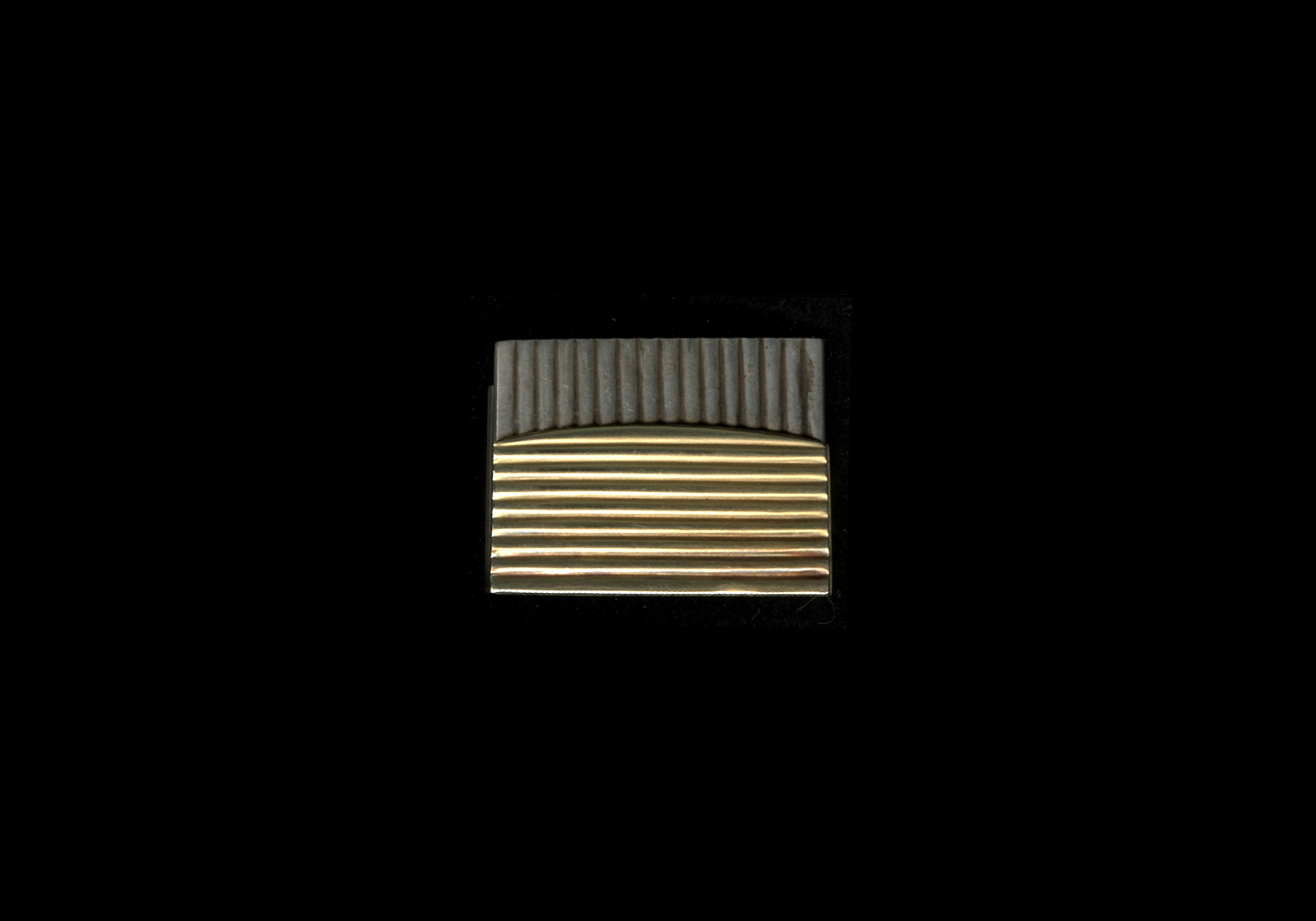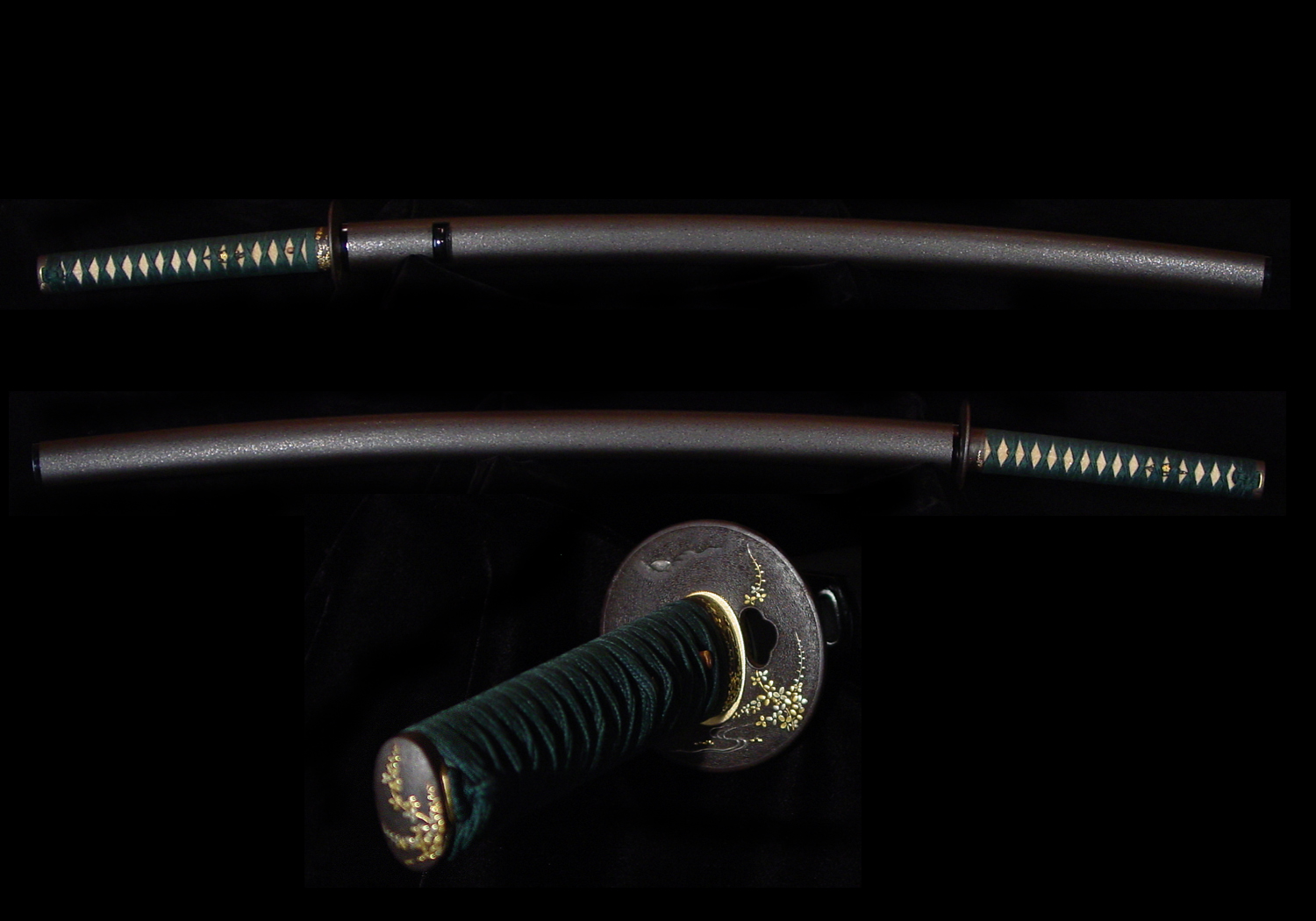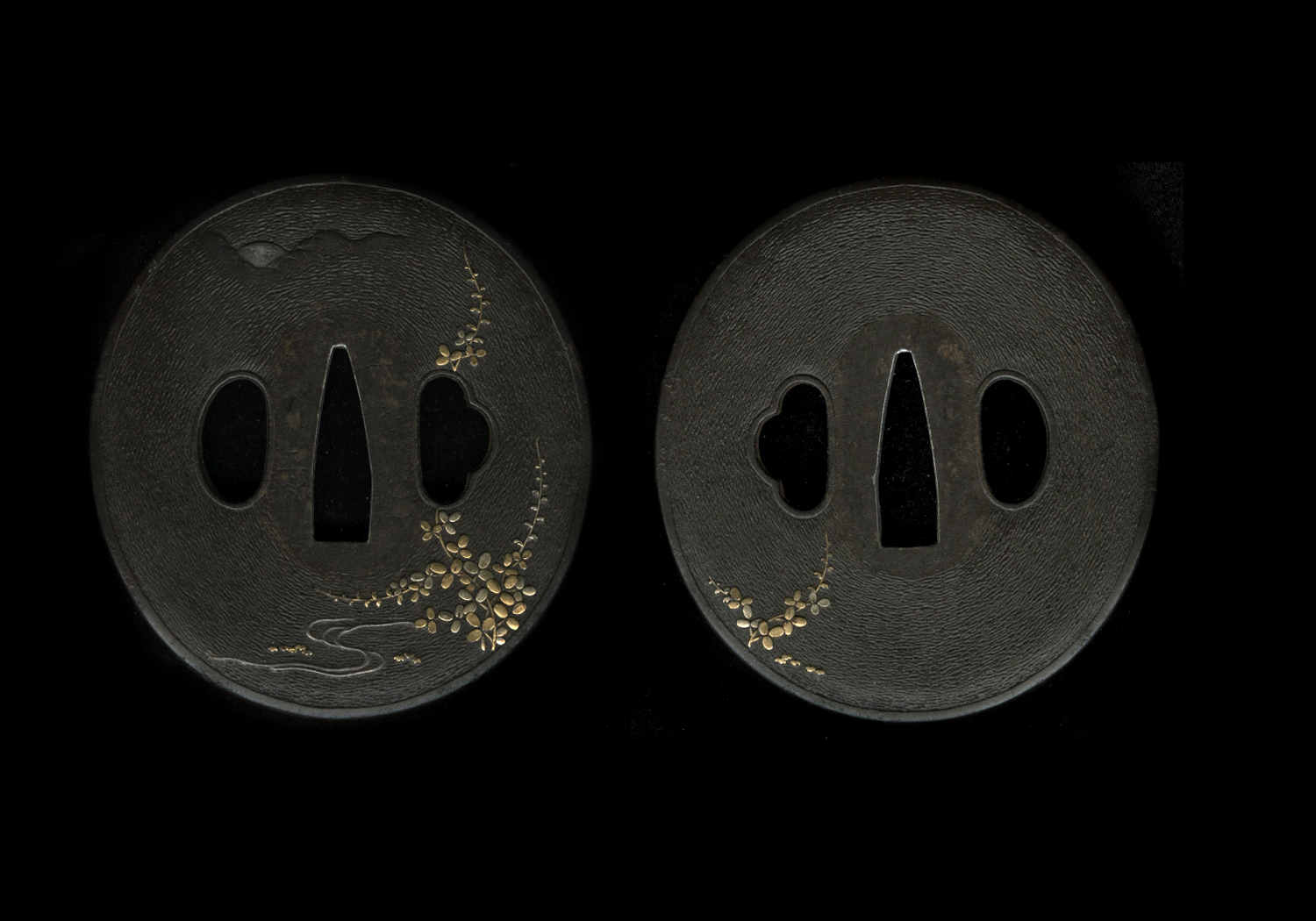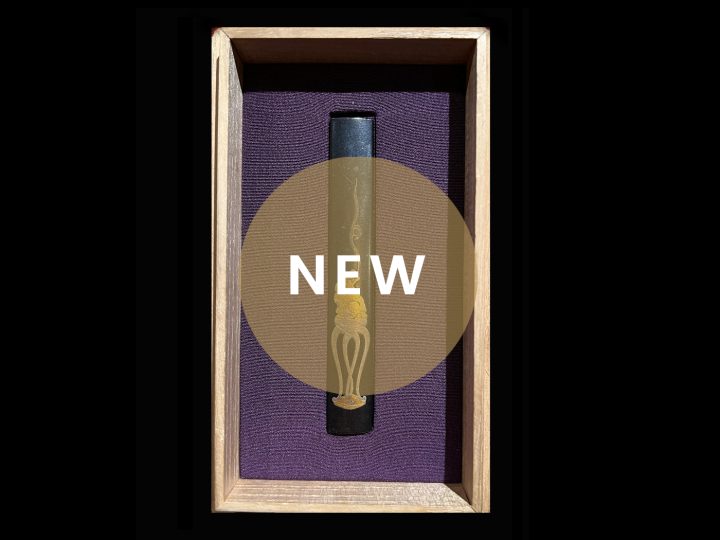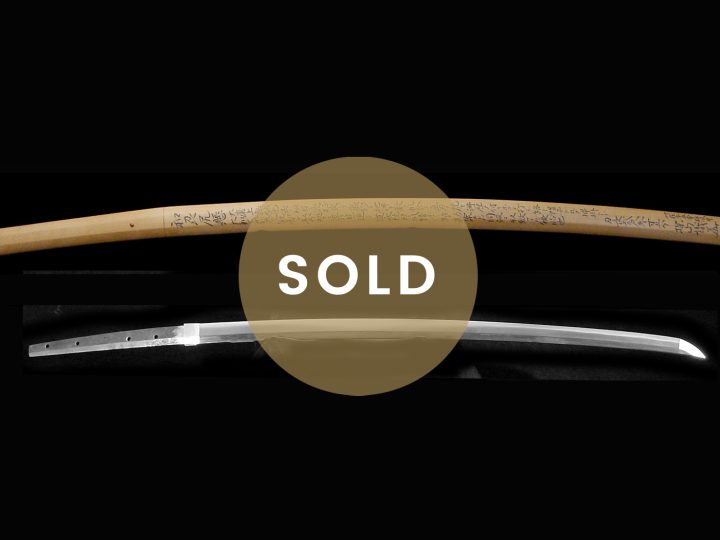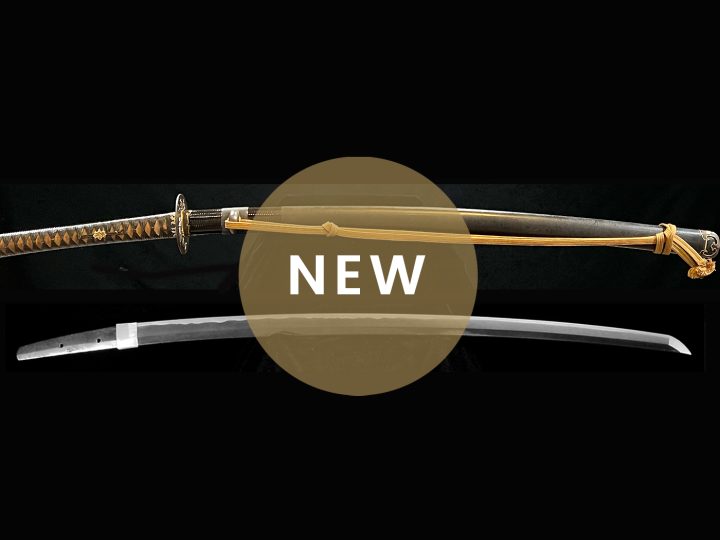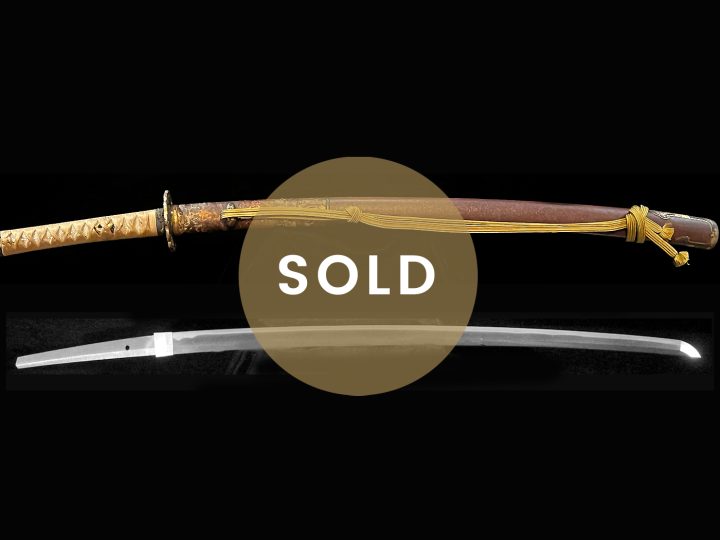
I am pleased to present this outstanding katana by the second generation Kunisuke. His father the Shodai Kunisuke was a student of Horikawa Kunihiro. After his father died, Kunisuke did not follow in the Horikawa tradition, rather he built on his father’s work style of profuse and distinct formations of chôji patterns. The second generation Kawachi no Kami Kunisuke is popularly known as Naka-Kawachi. The word, “naka”, in Japanese means “in between”. In this case, giving him the nick-name of Naka-Kawachi indicates that he was in between the first generation (Shodai) and the third generation (Sandai) of smiths by this name.
This smith is understood to have been born in Sei-shû of Ise Province (modern day Mie Ken), but little is known about his early years. We know he studied under his father, and was probably somewhat influenced by the Kii Ishidô group of smiths. He is classified as an Osaka Shintô smith and that certainly shows up in his working style.
Naka-Kawachi made both katana and wakizashi but he left very few tantô. His jigane is a wonderful ko-itame, while the hamon exhibits brilliant chôji patterns containing jûka and kobushi-gata (fist patterned) variations with the nioiguchi of the clearest nature. There are many ashi as well as some ko-nie contained in his hamon. There are also suguba works, although only on a very limited number of blades. The popular name kobushi-gata is given to his chôji variation that has an appearance of multiple fists put together in a clump.
This blade is an excellent example of his working style. It exhibits his early working style of the Shoho and Keian eras (1644-1651). His hamon has a long Osaka style yakidashi at the moto (lower start of the blade just above the habaki), chôji mixed with gunome, is rather wide and has a slightly high and low width to the midare hamon. These details are similar to those of the Shodai’s work and reflect the early career of the Nidai.
The profuse chôji are mixed with gunome with the chôji being formed in tight clusters with some forming slightly backward facing waves. This creates a very beautiful and sweeping effect. The hada is a ko-itame with areas of mokume. There is a very profuse nioi-guchi with clusters of nie nestled in the valleys of the chôji. The bôshi is straight with a round return. The sori of this blade is a very subtle koshi-sori tending to be a precursor of the typical Kanbun shape that was to follow in a few years.
The blade has a nagasa of 71 cm or 27.94 inches. The width at the moto-haba is 3.25 cm or 1.28 inches and at the saki-haba it is 2.22 cm or 0.87 inches. The Kasane is 0.74 cm or 0.30 inches. The sori is 1.20 cm or 0.47 inches. The sword is in excellent polish with only a very few very minor ware here and there that do not detract from its beauty.
The blade is signed with his typical early signature, Kawachi (no) Kami Kunisuke (河内守国助). Very few of his works are dated and this one is not. However, on the ura of the nakago we do have something else of interest. This blade has a gold inlay (kin zogan mei) cutting test which reads Kago Tsurubei Futatsu Dô. This means something to the effect that it cut through two bodies like water going through a basket (sieve).
This blade also comes with a nice koshirae with a floral theme. The saya is new but the metal fittings are from the 18thto 19thcentury and are very attractive. The blade was awarded Tokubetsu Hozon papers by the NBTHK in 2018. If you are looking for a beautiful blade with a two-body cutting test, don’t miss out on this one.
PRICE: SOLD

